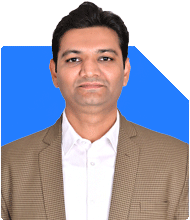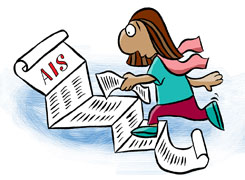How can I allocate my Rs. 60,000 monthly investment for my daughters' education?
Ramalingam Kalirajan |8442 Answers |Ask -Follow
Mutual Funds, Financial Planning Expert - Answered on Aug 22, 2024
He has an MBA in finance from the University of Madras and is a certified financial planner.
He is the director and chief financial planner at Holistic Investment, a Chennai-based firm that offers financial planning and wealth management advice.... more

Sir I am having Rs 60000 per month to invest. My older daughter is 10 years old and I also have 2 twin daughters who are 2 years old. Kindly guide how I can divide my investment so that I can generate a corpus for their education
Assessing Your Financial Situation
First, it's important to assess your current financial situation:
Monthly income allows you to invest Rs. 60,000.
Your daughters are aged 10 and 2 years (twins).
You likely have other financial commitments.
Given these factors, we'll structure a plan that aligns with your goals while ensuring financial security.
Prioritising Educational Corpus
Education costs are rising rapidly. You need to plan with a focus on inflation. For your elder daughter, who is 10, you have around 8 years before she starts her higher education. For the twins, you have approximately 16 years. We’ll create a separate investment strategy for each to optimise returns.
Investment Strategy for Your Elder Daughter (10 Years Old)
1. Diversified Equity Funds
Investing in diversified equity funds is essential. They offer higher returns in the long term, outpacing inflation. Allocate Rs. 30,000 monthly to these funds. This will allow the corpus to grow over the next 8 years. Actively managed funds, when chosen carefully, can provide better returns than index funds. Certified Financial Planners can help select funds that align with your goals and risk profile.
2. Balanced Funds
Balanced funds invest in both equity and debt. They provide stability while offering moderate returns. Allocate Rs. 10,000 monthly to these funds. This will help in managing risks associated with market fluctuations.
3. PPF (Public Provident Fund)
A portion of your investment should go into safe, government-backed schemes. The PPF is a good option. It offers tax benefits under Section 80C and provides a steady, risk-free return. Allocate Rs. 5,000 monthly to PPF. The amount will grow steadily, offering a safe cushion in case the equity market underperforms.
4. Education Savings Plan
Consider an education-specific savings plan. These are tailored to meet education expenses. They offer tax benefits, and the maturity amount is generally tax-free. Allocate Rs. 5,000 monthly to such a plan. This ensures a guaranteed corpus for your elder daughter’s education.
Investment Strategy for Your Twin Daughters (2 Years Old)
1. Long-Term Equity Mutual Funds
For the twins, you have more time to invest. Long-term equity mutual funds can generate substantial wealth. Allocate Rs. 20,000 monthly to these funds. Over the next 16 years, these funds can significantly multiply your investment, ensuring a robust corpus for their education.
2. Sukanya Samriddhi Yojana (SSY)
The Sukanya Samriddhi Yojana is specifically designed for the education and marriage of girl children. It offers high interest rates and tax benefits. Consider allocating Rs. 10,000 monthly to SSY for your twins. This is a secure, long-term investment option that aligns well with your goals.
3. Debt Funds
Debt funds are safer and offer stable returns. Although returns are lower compared to equity funds, they are less volatile. Allocate Rs. 5,000 monthly to debt funds. This diversifies the risk in your investment portfolio.
4. Gold Funds or Sovereign Gold Bonds
Gold is a good hedge against inflation and market risk. Investing in gold funds or Sovereign Gold Bonds can provide stability to your portfolio. Allocate Rs. 5,000 monthly to gold investments. Over the long term, this can act as a financial safeguard.
Creating an Emergency Fund
Before you invest, ensure that you have an emergency fund in place. This should cover at least 6 months of your household expenses. It acts as a financial safety net, ensuring that your investments are not disrupted by unforeseen circumstances.
Monitoring and Reviewing Investments
Your investment strategy should be dynamic. Review your portfolio at least once a year. Assess the performance of your funds and make adjustments as needed. Market conditions, economic changes, and your financial situation can change. It’s important to remain flexible.
Risk Management
While equity investments offer higher returns, they come with risks. Diversification is key to managing these risks. By spreading your investments across various asset classes—equity, debt, and gold—you reduce the impact of market volatility.
Tax Planning
Make sure that your investments are tax-efficient. Instruments like PPF, SSY, and certain mutual funds offer tax benefits under Section 80C. This reduces your tax liability and maximises your returns.
Long-Term Commitment
Investing for your daughters’ education requires long-term commitment. Stay invested, even during market downturns. Over time, the market tends to recover, and your investments will grow.
Finally
Your decision to invest Rs. 60,000 monthly is a significant step towards securing your daughters’ future. A well-diversified portfolio with a mix of equity, debt, and government-backed schemes will help you build a substantial corpus for their education. Review your investments regularly, stay disciplined, and avoid withdrawing funds prematurely. Your commitment today will ensure that your daughters have the financial support they need for their education.
Best Regards,
K. Ramalingam, MBA, CFP,
Chief Financial Planner,
www.holisticinvestment.in
You may like to see similar questions and answers below
Ramalingam Kalirajan |8442 Answers |Ask -Follow
Mutual Funds, Financial Planning Expert - Answered on Apr 05, 2024
Ramalingam Kalirajan |8442 Answers |Ask -Follow
Mutual Funds, Financial Planning Expert - Answered on Jan 06, 2024
Ramalingam Kalirajan |8442 Answers |Ask -Follow
Mutual Funds, Financial Planning Expert - Answered on Apr 05, 2024
Ramalingam Kalirajan |8442 Answers |Ask -Follow
Mutual Funds, Financial Planning Expert - Answered on Jun 20, 2024
Dr Nagarajan J S K |401 Answers |Ask -Follow
NEET, Medical, Pharmacy Careers - Answered on May 15, 2025
Dr Nagarajan J S K |401 Answers |Ask -Follow
NEET, Medical, Pharmacy Careers - Answered on May 15, 2025
Dr Nagarajan J S K |401 Answers |Ask -Follow
NEET, Medical, Pharmacy Careers - Answered on May 15, 2025
Dr Nagarajan J S K |401 Answers |Ask -Follow
NEET, Medical, Pharmacy Careers - Answered on May 15, 2025
Dr Nagarajan J S K |401 Answers |Ask -Follow
NEET, Medical, Pharmacy Careers - Answered on May 15, 2025
Dr Nagarajan J S K |401 Answers |Ask -Follow
NEET, Medical, Pharmacy Careers - Answered on May 15, 2025
Vipul Bhavsar |83 Answers |Ask -Follow
Tax Expert - Answered on May 15, 2025
Vipul Bhavsar |83 Answers |Ask -Follow
Tax Expert - Answered on May 15, 2025
Vipul Bhavsar |83 Answers |Ask -Follow
Tax Expert - Answered on May 15, 2025
Vipul Bhavsar |83 Answers |Ask -Follow
Tax Expert - Answered on May 15, 2025






















